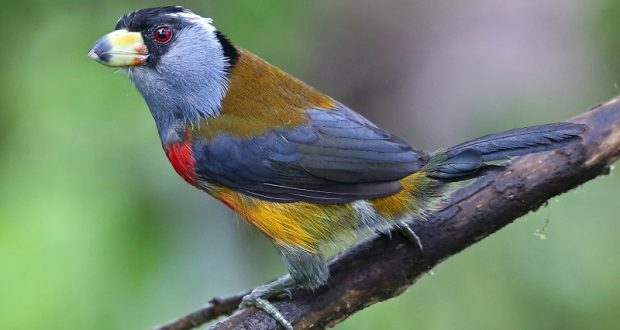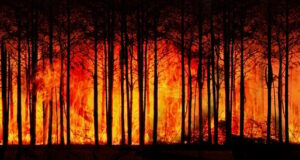MARIPOSA — Yosemite Area Audubon will offer Sierra foothill residents another virtual birding experience in an exotic locale at its monthly program in Mariposa on Thursday, Dec. 8.
Birder and photographer extraordinaire Matthew Matthiessen, an engaging storyteller and world-class photographer who has previously captivated local audiences with entertaining slide talks featuring his birding adventures in Peru, Brazil, Cuba, Ethiopia and Borneo, will visually take his viewers again to South America, this time to Ecuador.
His slide presentation, “Ants and Umbrellas: The Amazing Birds of Ecuador,” will begin at 7 p.m. at the Mariposa Methodist Church parish hall on 6th Street in downtown Mariposa.
Matthiessen traveled to Ecuador — which he describes as “one of the ‘birdiest’ places on the planet” — for about two weeks last December and January.
Straddling the equator — its namesake — along the west coast of South America, this Colorado-sized country lies mostly in the southern hemisphere. Within its borders Ecuador embraces varied topography ranging in elevation from sea level to its highest Andes peak, a volcano of more than 20,000 feet.
Ecuador’s geographic regions encompass subtropical coastal plains, the central Andean uplands and a flat eastern jungle, as well as the Galapagos Islands about 600 miles west of the mainland. Incredibly biodiverse, Ecuador—including the Galapagos—harbors more than 1,600 species of birds, about 15 percent of the world’s known species, along with 16,000 species of plants, 106 endemic reptiles and 138 amphibians.
Matthiessen’s presentation will focus mostly on birds of the cloud forest in the western highlands. Typical of the Neotropics, many species are eye-catching, even stunningly gaudy, while others are less showy, so well camouflaged in their luxuriantly vegetated habitats that they frequently escape observers’ notice.
As he has in his earlier presentations, Matthiessen will also undoubtedly picture other Ecuadorian wildlife as well as touch on the country’s history and culture.
A University of Tennessee graduate, Matthiessen began birding while growing up in Thailand, developing a lifelong love for international birding. He has since pursued his birding passion in many countries throughout the world and captured thousands of images through his camera lens.
Matthiessen’s adventures have also produced some memorable, heart-pounding experiences. He has lived through two bloody coups—a successful one in Thailand and a failed one in Zambia. He has been charged by an elephant, stalked by a lion and threatened by a crocodile. He has kissed a cobra, push-started a Jeep amidst a lion pride, had the spotlight die while next to a leopard, captured a 14-foot python and almost tripped over a sleeping silverback gorilla. He will likely highlight some of those experiences in his presentation.
Like all Yosemite Area Audubon programs, Matthiessen’s presentation is open and free to the public, although donations to defray program costs and to support the chapter’s local activities are welcome. Call (209) 742-5579 for more information about the program.
Audubon field trips in December will be the annual Christmas bird counts in the central Sierra foothill and mountain area communities. The Oakhurst bird count is scheduled for Friday, Dec. 16; the Mariposa count will occur on Saturday, Dec. 17; and the Yosemite CBC is scheduled for Sunday, Dec. 18.
Visit www.yosemiteaudubon.org or call (209) 742-5579 or (209) 966-2547 for more information. Additional details about the Christmas bird counts will appear in subsequent posts on Sierra News Online.
The mission of the National Audubon Society, the namesake of noted 19th-century naturalist and bird painter John James Audubon; its state affiliate, Audubon California; and local chapters such as the Yosemite Area Audubon Society is to conserve and restore natural ecosystems, focusing on birds, other wildlife and their habitats for the benefit of humanity and the earth’s biological diversity.



